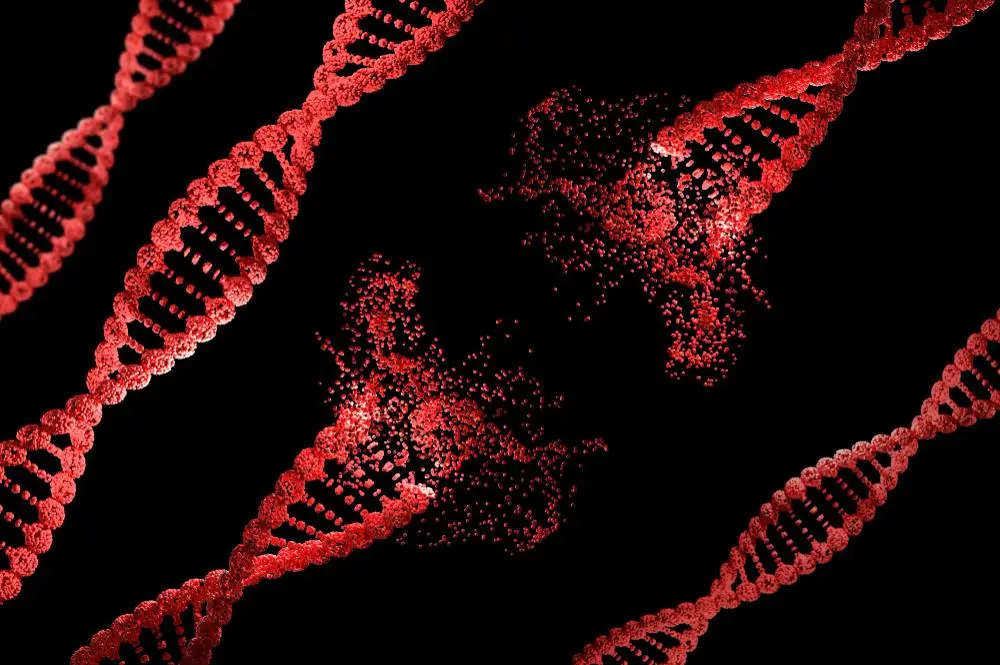A team of UCSF, UCSD, and Brown University scientists has produced a multi-scale map of protein assemblies pertaining to damage response. The DNA Damage Response (DDR) makes sure that DNA replication, as well as transcription, are error-free. Disruptions in DDR cause several diseases. It is quite challenging to determine the proteins managing the DDR as well as their organization into several complexes, including constitutive interactions. The authors have addressed this challenge by systematically mapping DDR assemblies at multiple scales using multi-conditional network analysis. They performed a comprehensive screen for protein interactions on 21 DDR factors. They further incorporate existing proteomics data to construct a map of DDR protein assemblies, DDRAM. With a total of 605 proteins organized into a hierarchy of 109 assemblies, DDRAM also recovers canonical repair mechanisms and proposes new DDR-associated proteins.
The DNA Damage Response: What Is It and How Does It Work?
A sophisticated network of machinery has evolved in organisms to guarantee the efficient operation of cells and to protect the integrity of the genome. This machinery is known as the DNA Damage Response (DDR). This machinery includes repair pathways that include different kinds of DNA lesions for direct reversal, base excision repair (BER), nucleotide excision repair (NER), mismatch repair (MMR), interstrand cross-link repair (ICL), and double-stranded break (DSB) repair. Apparatus for communicating the damage is also included in the DDR toolkit. The apparatus for damage sensing, signal transducers for communicating the damage to repair factors and downstream effectors, as well as connections to stress and apoptotic responses. DDR is also intertwined with cell-cycle checkpoints, chromatin packaging, and DNA replication. Through these processes, DDR involves thousands of gene expression and protein modification changes.
Previous Efforts Towards Building DDR Assemblies Map
Significant effort has been directed towards constructing and maintaining DDR reference maps in order to cope with the complexity of DDR as well as the constant influx of new knowledge. These reference maps provide essential resources for cataloging essential proteins involved in DDR as well as their organization as a hierarchy of sensing, signal transduction, and repair systems. The major challenge for these maps is that they are predominantly based on the curation of literature. This sometimes involves reconciling conflicting results. Also, literature curation focuses on well-studied mechanisms and processes. Understudied proteins and promising candidates are largely ignored, yet they form a large part of the human proteome.
Several studies have deployed genomic and proteomic screens to achieve a more complete map. These screens identify genes, proteins, and interactions related to DDR or a specific DNA repair process. Earlier screens were carried out extensively for yeast, but with the advent of big data analysis as well as advancement in mass spectrometry (MS) and genome editing, the global interrogation of DDR pathways in humans is now plausible. advent
DDRAM: DNA Damage Response Assemblies Map
The authors produced DDRAM by applying an integrative multi-omics strategy to identify DDR factors and organize them into a multi-scale, hierarchical map of protein assemblies. DDRAM incorporates a data-driven approach. It assigns data-driven definitions to proteins for whether they are assigned to DDR or not. This is based on applying quantitative and reproducible rules for weighing the strength of the experimental evidence. The assemblies to which DDR proteins are assigned are themselves identified by quantitative and reproducible rules. This enables DDRAM to include understudied proteins. The next advantage of DDRAM over others is that it is scalable. Hence, incorporating future large-scale experiments would be possible in an automated manner.
DDRAM was able to define a network of DDR protein interactions. The authors also achieved the multi-scale organization of DDR proteins into 109 assemblies. They found that DDR assemblies were associated with specific dependencies to genotoxic stress. The DDR proteins were validated with specific readouts of repair.
Limitations of DDRAM
The generation of DDRAM is not free from bias. A major bias lies in the selection of the 21 proteins which were targeted by the affinity purification MS (AS-MS). These targeted experiments are backstopped by the multi-omics data. The choice of DNA damaging agent also introduces further bias.
Conclusion
The DNA damage response map, DDRAM, is a proteomics-driven map of assemblies. The canonical repair mechanisms recovered by the map are validated by physical and functional assays. With the 21 DDR factors-centered approach, the authors were able to organize 605 proteins into a multi-scale and hierarchical map of 109 assemblies. This is indeed a huge improvement to the previous reference maps and will further aid in cancer treatment, given that cancer therapy is significantly linked to DDR. With improved technology, the DDRAM framework could be further extended and generalized, thereby providing a template for the construction of multi-scale maps for other diseases. DDRAM is yet another remarkable and groundbreaking methodology based on a machine-learning approach implying the increasing utility of a machine-learning-based paradigm for addressing biological questions.
Article Source: Reference Paper | Article Reference
Learn More:
Banhita is a consulting scientific writing intern at CBIRT. She's a mathematician turned bioinformatician. She has gained valuable experience in this field of bioinformatics while working at esteemed institutions like KTH, Sweden, and NCBS, Bangalore. Banhita holds a Master's degree in Mathematics from the prestigious IIT Madras, as well as the University of Western Ontario in Canada. She's is deeply passionate about scientific writing, making her an invaluable asset to any research team.










